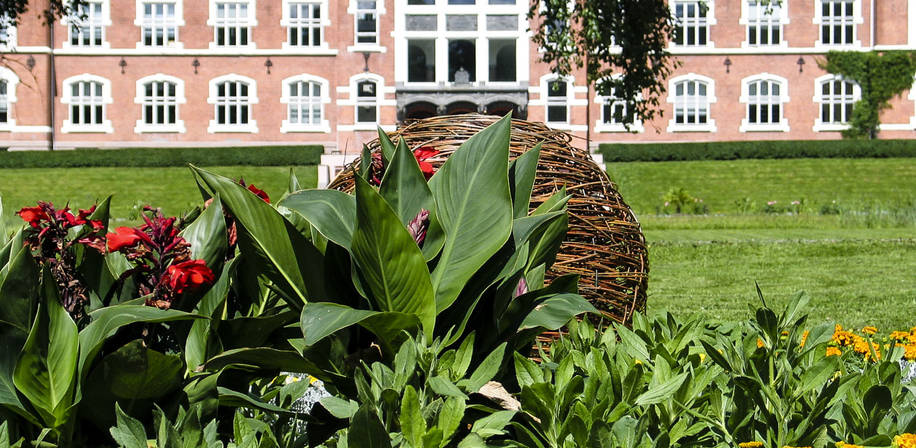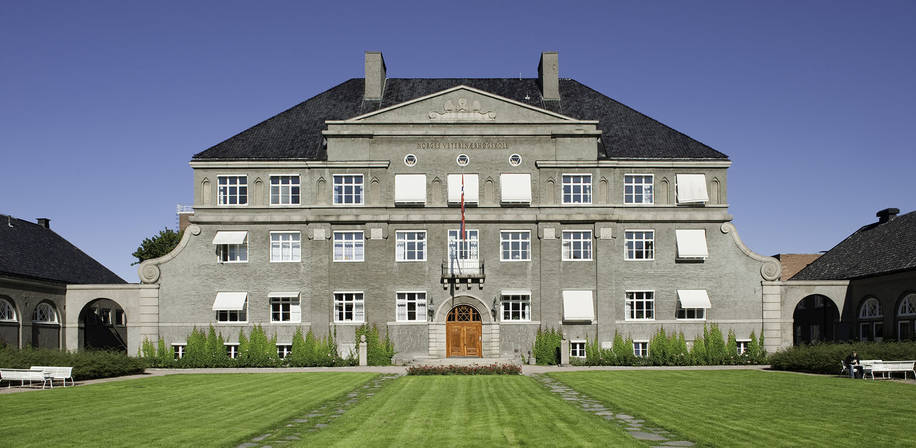
Norwegian University of Life Sciences NMBU

Introduction
NMBU's research and study programmes are enabling people all over the world to tackle the big, global challenges regarding the environment, sustainable development, how to improve human and animal health, renewable energy sources, food production, and land- and resource management.
Campus Ås

Campus Ås houses Norway's largest interdisciplinary academic environment in the life sciences.
The Norwegian University of Life Sciences (NMBU) consists of seven faculties, of which six are located at Campus Ås and one is partially located at Campus Adamstuen (until 2019):
- Biosciences
- Chemistry, Biotechnology, and Food Science
- Environmental Sciences and Natural Resource Management
- Landscape and Society
- School of Economics and Business
- Science and Technology
- Veterinary Medicine
A new research and teaching building for veterinary science will open in 2020, meaning all seven faculties at NMBU will then be consolidated in Ås. The Norwegian Veterinary Institute will move to Campus Ås at the same time.
Campus Ås is also home to one of Norway's most beautiful parks, with a number of historical buildings, as well as Ås Farm, where research and teaching on traditional livestock are conducted.
Campus Ås covers a total area of 600 hectares in the municipality of Ås.
Two other major institutions are also co-located with NMBU at Campus Ås: key parts of the Norwegian Institute of Food, Fisheries, and Aquaculture Research (Nofima) and the Norwegian Institute of Bioeconomy Research (NIBIO).
Campus Adamstuen

Campus Adamstuen is home to Faculty of Veterinary Medicine. The faculty is Norway’s only institution of higher education for veterinarians with competence in two distinct academic fields: veterinary medicine and veterinary public health.
Veterinary medicine addresses animal health and well-being. Key areas include knowledge about diseases, diagnostics, and treatment. The field includes both production animals, including farmed fish, and companion animals.
Veterinary public health pertains to all aspects of preventing the spread of disease from animals to humans and is a field that is in increasing demand.
On 1 January 2014, the Norwegian School of Veterinary Science (NVH) and the University of Life Sciences (UMB) were merged to form the Norwegian University of Life Sciences (NMBU), consolidating research and teaching on the entire biological production chain under a single umbrella.
Faculty of Veterinary Medicine comprises four departments at Campus Adamstuen:
- Basic Sciences and Aquatic Medicine (Basam)
- Food Safety and Infection Biology (Matinf)
- Production Animal Clinical Sciences (Prodmed)
- Companion Animal Clinical Sciences (Sportfamed)
Campus Adamstuen is also home to the University Animal Hospital, consisting of the Companion Animal Clinic, the Equine Clinic, and the Production Animal Clinic.
The University Animal Hospital treats sick animals from the entire country and is closely linked to the research and educational activities at NMBU School of Veterinary Medicine.
The Norwegian Veterinary Institute is a biomedical research institute that shares premises with Faculty of Veterinary Medicine at Campus Adamstuen. The Norwegian Veterinary History Museum is also located here.
Campus Adamstuen is scheduled to close in 2019, and NMBU School of Veterinary Medicine and the University Animal Hospital will then move into state-of-the-art veterinary premises at Campus Ås, meaning all three faculties will finally be co-located in one place. The Norwegian Veterinary Institute will move to Campus Ås at the same time.
A brand new veterinary science research and teaching building are currently being built at Campus Ås.
Faculty of Veterinary Medicine also has a division located in south-western Norway: the Section for Small Ruminant Research in Høyland, Sandnes.
Programmes
- MSc in Agroecology
- MSc in Animal Breeding and Genetics
- MSc in Applied Economics and Sustainability
- MSc in Feed Manufacturing Technology
- MSc in International Development Studies
- MSc in International Environmental Studies
- MSc in International Relations
- MSc in Plant Science
- MSc in Radioecology
- MSc in in Aquaculture
- MSc in in Data Science
- MSc in in Ecology
- Master in Aquatic Food Production - Safety and Quality (AQFood)